Front Cover
Structured Parallel Programming: Patterns for Efficient Computation
Copyright
Table of Contents
Listings
Preface
Preliminaries
1 Introduction
1.1 Think Parallel
1.2 Performance
1.3 Motivation: Pervasive Parallelism
1.3.1 Hardware Trends Encouraging Parallelism
1.3.2 Observed Historical Trends in Parallelism
1.3.3 Need for Explicit Parallel Programming
1.4 Structured Pattern-Based Programming
1.5 Parallel Programming Models
1.5.1 Desired Properties
1.5.2 Abstractions Instead of Mechanisms
1.5.3 Expression of Regular Data Parallelism
1.5.4 Composability
1.5.5 Portability of Functionality
1.5.6 Performance Portability
1.5.7 Safety, Determinism, and Maintainability
1.5.8 Overview of Programming Models Used
Cilk Plus
Threading Building Blocks (TBB)
OpenMP
Array Building Blocks (ArBB)
OpenCL
1.5.9 When to Use Which Model?
1.6 Organization of this Book
1.7 Summary
2 Background
2.1 Vocabulary and Notation
2.2 Strategies
2.3 Mechanisms
2.4 Machine Models
2.4.1 Machine Model
Instruction Parallelism
Memory Hierarchy
Virtual Memory
Multiprocessor Systems
Attached Devices
2.4.2 Key Features for Performance
Data Locality
Parallel Slack
2.4.3 Flynn's Characterization
2.4.4 Evolution
2.5 Performance Theory
2.5.1 Latency and Throughput
2.5.2 Speedup, Efficiency, and Scalability
2.5.3 Power
2.5.4 Amdahl's Law
2.5.5 Gustafson-Barsis' Law
2.5.6 Work-Span Model
2.5.7 Asymptotic Complexity
2.5.8 Asymptotic Speedup and Efficiency
2.5.9 Little's Formula
2.6 Pitfalls
2.6.1 Race Conditions
2.6.2 Mutual Exclusion and Locks
2.6.3 Deadlock
2.6.4 Strangled Scaling
2.6.5 Lack of Locality
2.6.6 Load Imbalance
2.6.7 Overhead
2.7 Summary
I Patterns
3 Patterns
3.1 Nesting Pattern
3.2 Structured Serial Control Flow Patterns
3.2.1 Sequence
3.2.2 Selection
3.2.3 Iteration
3.2.4 Recursion
3.3 Parallel Control Patterns
3.3.1 Fork–Join
3.3.2 Map
3.3.3 Stencil
3.3.4 Reduction
3.3.5 Scan
3.3.6 Recurrence
3.4 Serial Data Management Patterns
3.4.1 Random Read and Write
3.4.2 Stack Allocation
3.4.3 Heap Allocation
3.4.4 Closures
3.4.5 Objects
3.5 Parallel Data Management Patterns
3.5.1 Pack
3.5.2 Pipeline
3.5.3 Geometric Decomposition
3.5.4 Gather
3.5.5 Scatter
3.6 Other Parallel Patterns
3.6.1 Superscalar Sequences
3.6.2 Futures
3.6.3 Speculative Selection
3.6.4 Workpile
3.6.5 Search
3.6.6 Segmentation
3.6.7 Expand
3.6.8 Category Reduction
3.6.9 Term Graph Rewriting
3.7 Non-Deterministic Patterns
3.7.1 Branch and Bound
3.7.2 Transactions
3.8 Programming Model Support for Patterns
3.8.1 Cilk Plus
Nesting, Recursion, Fork–Join
Reduction
Map, Workpile
Scatter, Gather
3.8.2 Threading Building Blocks
Nesting, Recursion, Fork–Join
Map
Workpile
Reduction
Scan
Pipeline
Speculative Selection, Branch and Bound
3.8.3 OpenMP
Map, Workpile
Reduction
Fork–Join
Stencil, Geometric Decomposition, Gather, Scatter
3.8.4 Array Building Blocks
Map
Reduction, Scan
Scatter, Gather
Pack
3.8.5 OpenCL
Map
Gather
Scatter
Reduction, Scan, Pack, Expand
Stencil
Workpile
Superscalar Sequences
Geometric Decomposition
Closures
3.9 Summary
4 Map
4.1 Map
4.2 Scaled Vector Addition (SAXPY)
4.2.1 Description of the Problem
4.2.2 Serial Implementation
4.2.3 TBB
4.2.4 Cilk Plus
4.2.5 Cilk Plus with Array Notation
4.2.6 OpenMP
4.2.7 ArBB Using Vector Operations
4.2.8 ArBB Using Elemental Functions
4.2.9 OpenCL
4.3 Mandelbrot
4.3.1 Description of the Problem
4.3.2 Serial Implementation
4.3.3 TBB
4.3.4 Cilk Plus
4.3.5 Cilk Plus with Array Notations
4.3.6 OpenMP
4.3.7 ArBB
4.3.8 OpenCL
4.4 Sequence of Maps versus Map of Sequence
4.5 Comparison of Parallel Models
4.6 Related Patterns
4.6.1 Stencil
4.6.2 Workpile
4.6.3 Divide-and-conquer
4.7 Summary
5 Collectives
5.1 Reduce
5.1.1 Reordering Computations
5.1.2 Vectorization
5.1.3 Tiling
5.1.4 Precision
5.1.5 Implementation
OpenCL
TBB
Cilk Plus
ArBB
OpenMP
5.2 Fusing Map and Reduce
5.2.1 Explicit Fusion in TBB
5.2.2 Explicit Fusion in Cilk Plus
5.2.3 Automatic Fusion in ArBB
5.3 Dot Product
5.3.1 Description of the Problem
5.3.2 Serial Implementation
5.3.3 SSE Intrinsics
5.3.4 TBB
5.3.5 Cilk Plus
5.3.6 OpenMP
5.3.7 ArBB
5.4 Scan
5.4.1 Cilk Plus
5.4.2 TBB
5.4.3 ArBB
5.4.4 OpenMP
5.5 Fusing Map and Scan
5.6 Integration
5.6.1 Description of the Problem
5.6.2 Serial Implementation
5.6.3 Cilk Plus
5.6.4 OpenMP
5.6.5 TBB
5.6.6 ArBB
5.7 Summary
6 Data Reorganization
6.1 Gather
6.1.1 General Gather
6.1.2 Shift
6.1.3 Zip
6.2 Scatter
6.2.1 Atomic Scatter
6.2.2 Permutation Scatter
6.2.3 Merge Scatter
6.2.4 Priority Scatter
6.3 Converting Scatter to Gather
6.4 Pack
6.5 Fusing Map and Pack
6.6 Geometric Decomposition and Partition
6.7 Array of Structures vs. Structures of Arrays
6.8 Summary
7 Stencil and Recurrence
7.1 Stencil
7.2 Implementing Stencil with Shift
7.3 Tiling Stencils for Cache
7.4 Optimizing Stencils for Communication
7.5 Recurrence
7.6 Summary
8 Fork–Join
8.1 Definition
8.2 Programming Model Support for Fork–Join
8.2.1 Cilk Plus Support for Fork–Join
8.2.2 TBB Support for Fork–Join
8.2.3 OpenMP Support for Fork–Join
8.3 Recursive Implementation of Map
8.4 Choosing Base Cases
8.5 Load Balancing
8.6 Complexity of Parallel Divide-and-Conquer
8.7 Karatsuba Multiplication of Polynomials
8.7.1 Note on Allocating Scratch Space
8.8 Cache Locality and Cache-Oblivious Algorithms
8.9 Quicksort
8.9.1 Cilk Quicksort
8.9.2 TBB Quicksort
8.9.3 Work and Span for Quicksort
8.10 Reductions and Hyperobjects
8.11 Implementing Scan with Fork–Join
8.12 Applying Fork–Join to Recurrences
8.12.1 Analysis
8.12.2 Flat Fork–Join
8.13 Summary
9 Pipeline
9.1 Basic Pipeline
9.2 Pipeline with Parallel Stages
9.3 Implementation of a Pipeline
9.4 Programming Model Support for Pipelines
9.4.1 Pipeline in TBB
9.4.2 Pipeline in Cilk Plus
9.5 More General Topologies
9.6 Mandatory versus Optional Parallelism
9.7 Summary
II Examples
10 Forward Seismic Simulation
10.1 Background
10.2 Stencil Computation
10.3 Impact of Caches on Arithmetic Intensity
10.4 Raising Arithmetic Intensity with Space–Time Tiling
10.5 Cilk Plus Code
10.6 ArBB Implementation
10.7 Summary
11 K-Means Clustering
11.1 Algorithm
11.2 K-Means with Cilk Plus
11.2.1 Hyperobjects
11.3 K-Means with TBB
11.4 Summary
12 Bzip2 Data Compression
12.1 The Bzip2 Algorithm
12.2 Three-Stage Pipeline Using TBB
12.3 Four-Stage Pipeline Using TBB
12.4 Three-Stage Pipeline Using Cilk Plus
12.5 Summary
13 Merge Sort
13.1 Parallel Merge
13.1.1 TBB Parallel Merge
13.1.2 Work and Span of Parallel Merge
13.2 Parallel Merge Sort
13.2.1 Work and Span of Merge Sort
13.3 Summary
14 Sample Sort
14.1 Overall Structure
14.2 Choosing the Number of Bins
14.3 Binning
14.3.1 TBB Implementation
14.4 Repacking and Subsorting
14.5 Performance Analysis of Sample Sort
14.6 For C++ Experts
14.7 Summary
15 Cholesky Factorization
15.1 Fortran Rules!
15.2 Recursive Cholesky Decomposition
15.3 Triangular Solve
15.4 Symmetric Rank Update
15.5 Where Is the Time Spent?
15.6 Summary
Appendices
Appendix A: Further Reading
A.1 Parallel Algorithms and Patterns
A.2 Computer Architecture Including Parallel Systems
A.3 Parallel Programming Models
Appendix B: Cilk Plus
B.1 Shared Design Principles with TBB
B.2 Unique Characteristics
B.3 Borrowing Components from TBB
B.4 Keyword Spelling
B.5 cilk_for
B.6 cilk_spawn and cilk_sync
B.7 Reducers (Hyperobjects)
B.7.1 C++ Syntax
B.7.2 C Syntax
B.8 Array Notation
B.8.1 Specifying Array Sections
B.8.2 Operations on Array Sections
B.8.3 Reductions on Array Sections
B.8.4 Implicit Index
B.8.5 Avoid Partial Overlap of Array Sections
B.9 #pragma simd
B.10 Elemental Functions
B.10.1 Attribute Syntax
B.11 Note on C++11
B.12 Notes on Setup
B.13 History
B.14 Summary
Appendix C: TBB
C.1 Unique Characteristics
C.2 Using TBB
C.3 parallel_for
C.3.1 blocked_range
C.3.2 Partitioners
C.4 parallel_reduce
C.5 parallel_deterministic_reduce
C.6 parallel_pipeline
C.7 parallel_invoke
C.8 task_group
C.9 task
C.9.1 empty_task
C.10 atomic
C.11 enumerable_thread_specific
C.12 Notes on C++11
C.13 History
C.14 Summary
Appendix D: C++11
D.1 Declaring with auto
D.2 Lambda Expressions
D.3 std::move
Appendix E: Glossary
Bibliography
Index
A
B
C
D
E
F
G
H
I
K
L
M
N
O
P
Q
R
S
T
U
V
W
Z
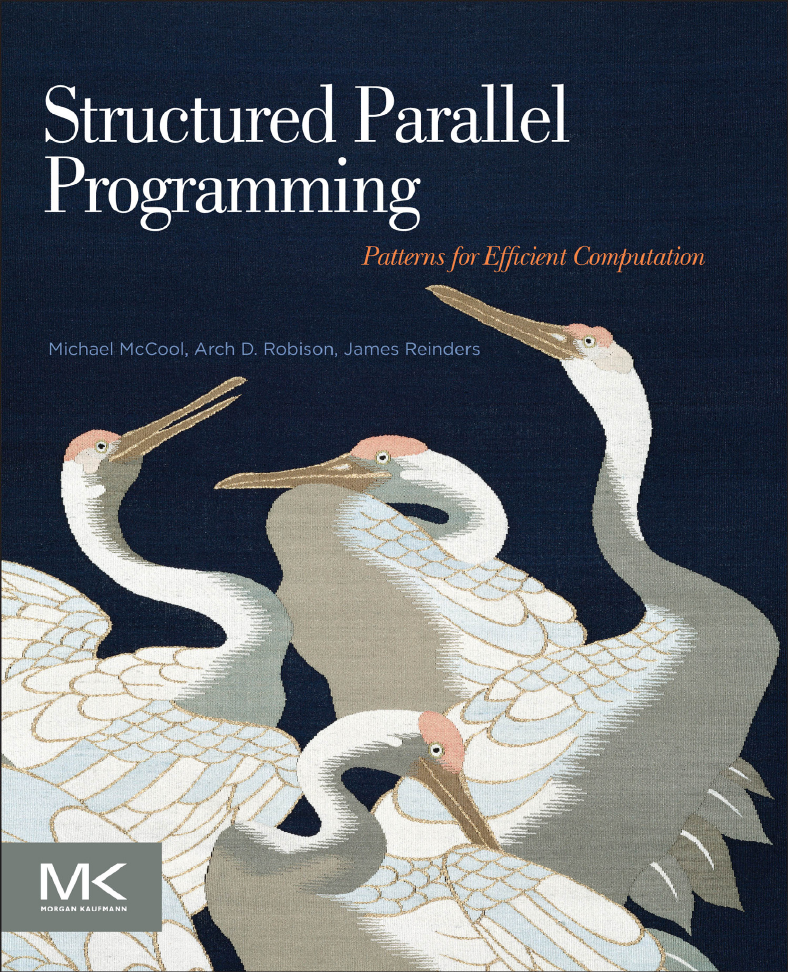
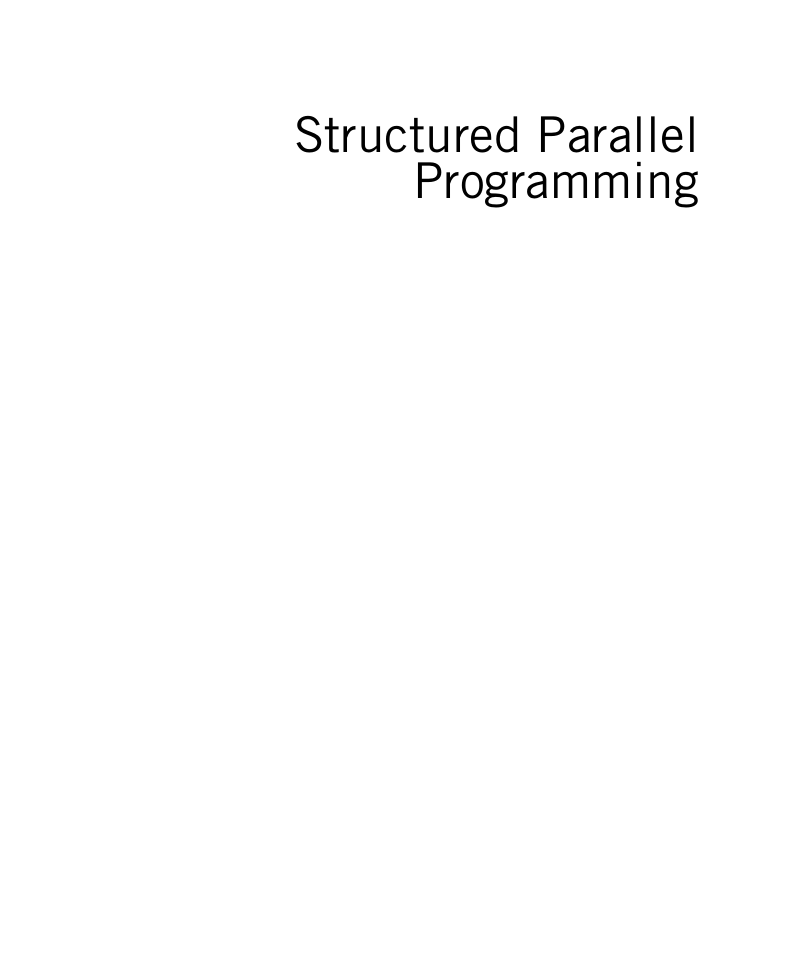

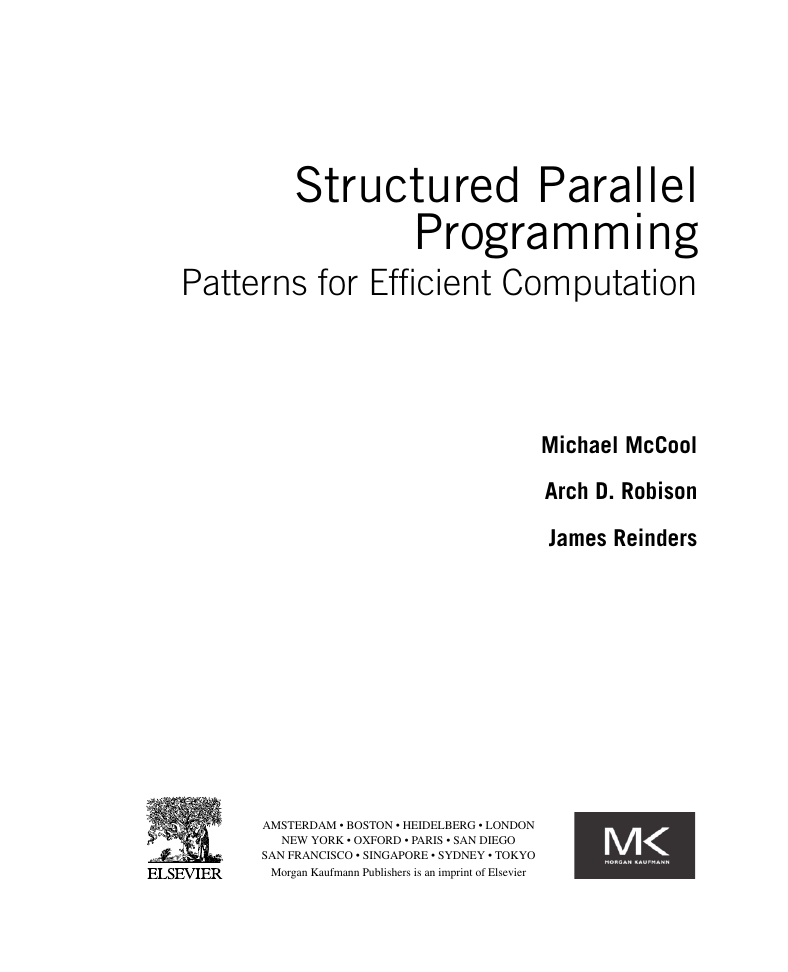
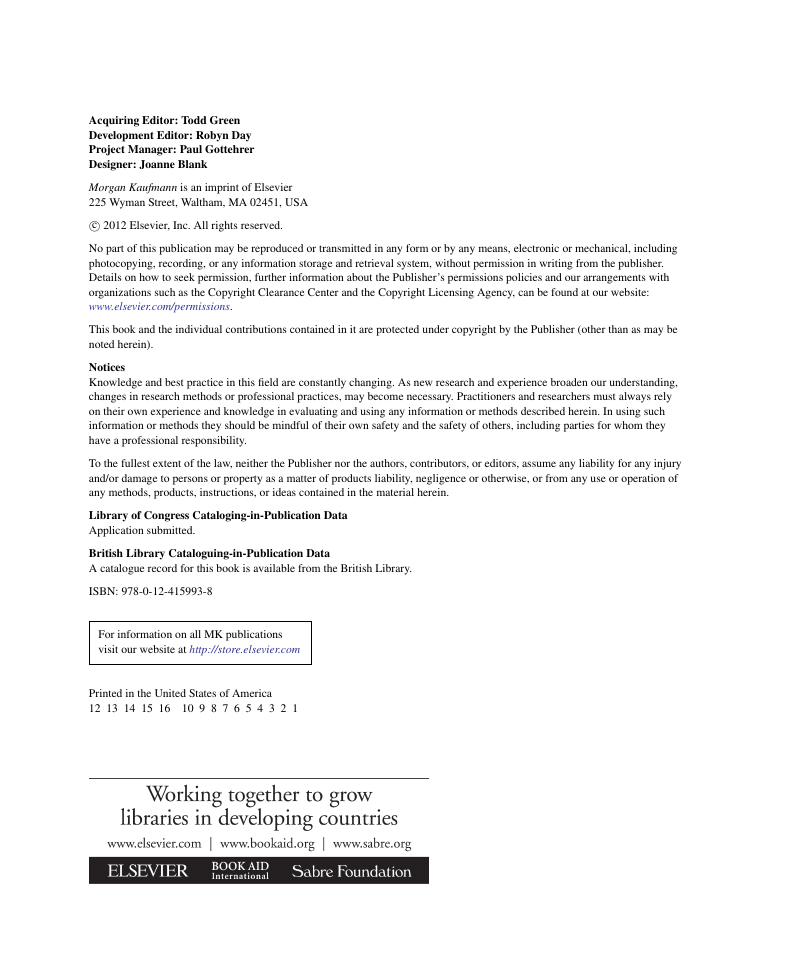
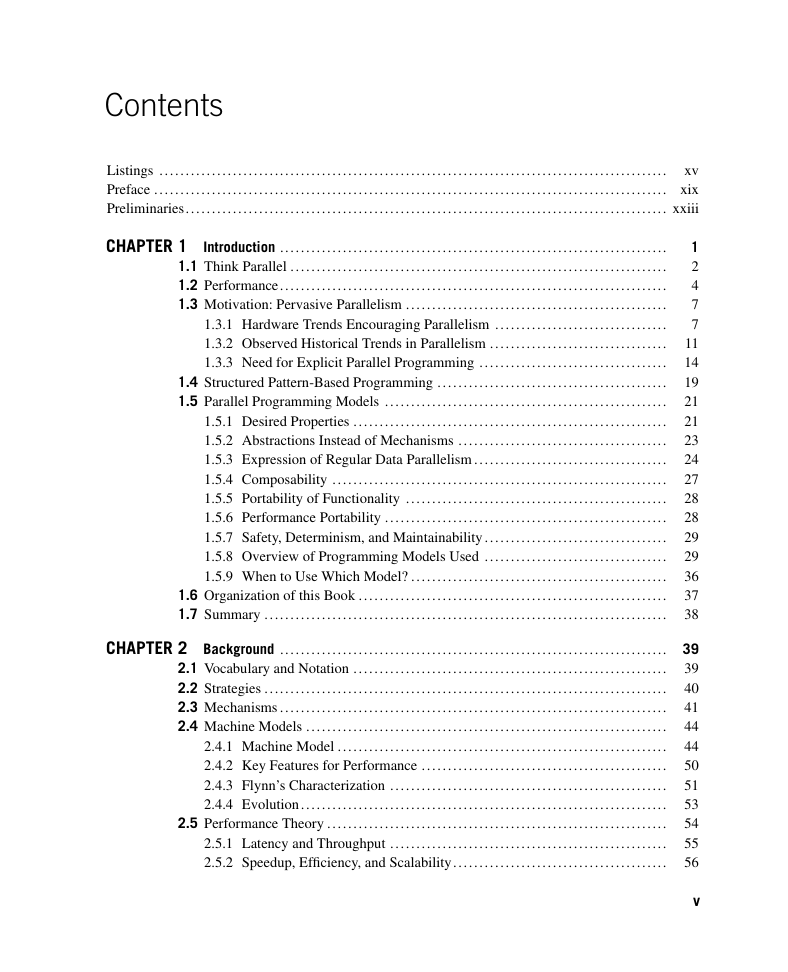
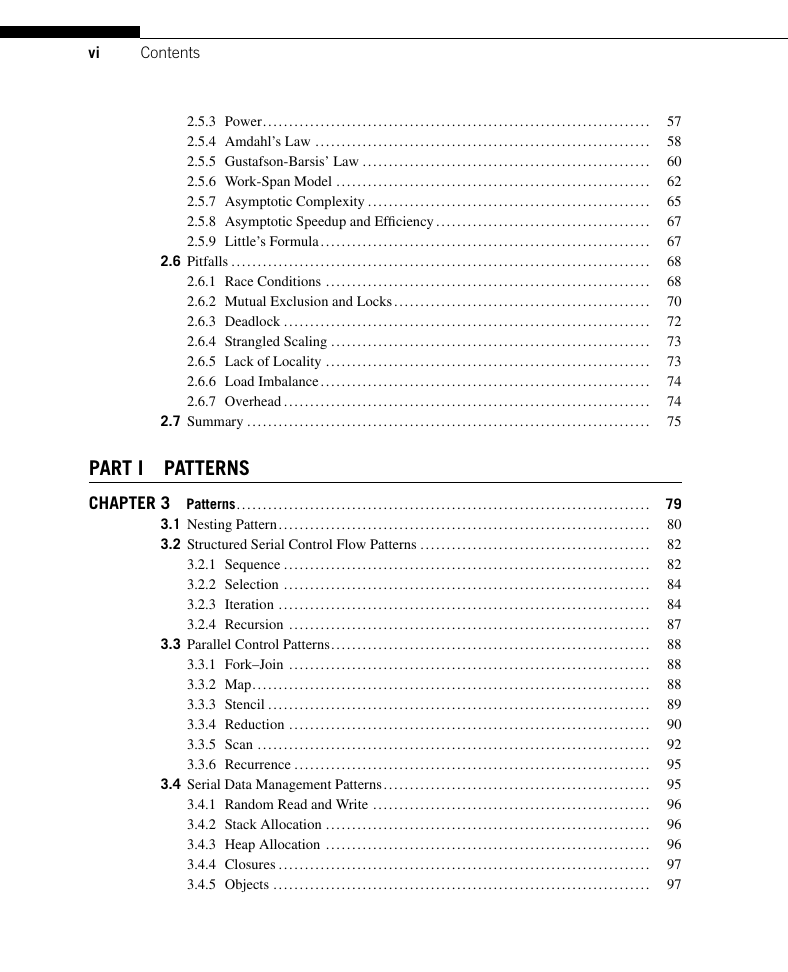
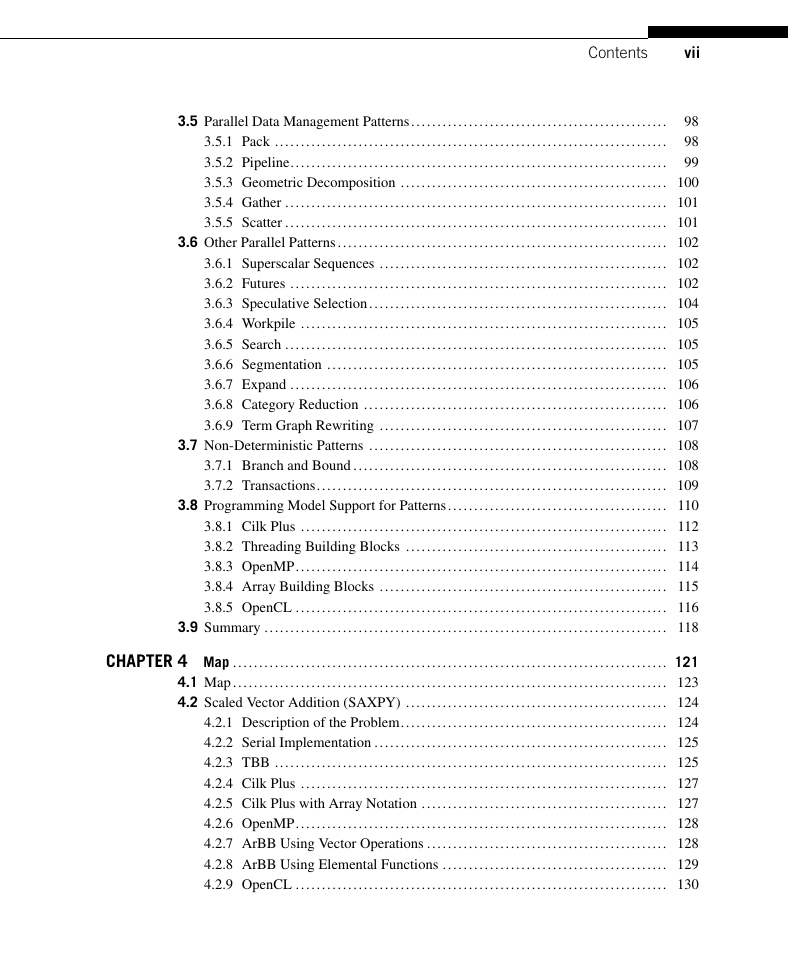








 2023年江西萍乡中考道德与法治真题及答案.doc
2023年江西萍乡中考道德与法治真题及答案.doc 2012年重庆南川中考生物真题及答案.doc
2012年重庆南川中考生物真题及答案.doc 2013年江西师范大学地理学综合及文艺理论基础考研真题.doc
2013年江西师范大学地理学综合及文艺理论基础考研真题.doc 2020年四川甘孜小升初语文真题及答案I卷.doc
2020年四川甘孜小升初语文真题及答案I卷.doc 2020年注册岩土工程师专业基础考试真题及答案.doc
2020年注册岩土工程师专业基础考试真题及答案.doc 2023-2024学年福建省厦门市九年级上学期数学月考试题及答案.doc
2023-2024学年福建省厦门市九年级上学期数学月考试题及答案.doc 2021-2022学年辽宁省沈阳市大东区九年级上学期语文期末试题及答案.doc
2021-2022学年辽宁省沈阳市大东区九年级上学期语文期末试题及答案.doc 2022-2023学年北京东城区初三第一学期物理期末试卷及答案.doc
2022-2023学年北京东城区初三第一学期物理期末试卷及答案.doc 2018上半年江西教师资格初中地理学科知识与教学能力真题及答案.doc
2018上半年江西教师资格初中地理学科知识与教学能力真题及答案.doc 2012年河北国家公务员申论考试真题及答案-省级.doc
2012年河北国家公务员申论考试真题及答案-省级.doc 2020-2021学年江苏省扬州市江都区邵樊片九年级上学期数学第一次质量检测试题及答案.doc
2020-2021学年江苏省扬州市江都区邵樊片九年级上学期数学第一次质量检测试题及答案.doc 2022下半年黑龙江教师资格证中学综合素质真题及答案.doc
2022下半年黑龙江教师资格证中学综合素质真题及答案.doc